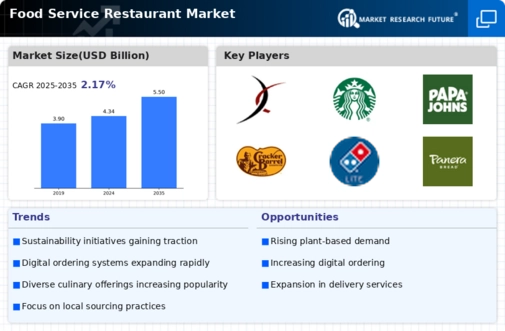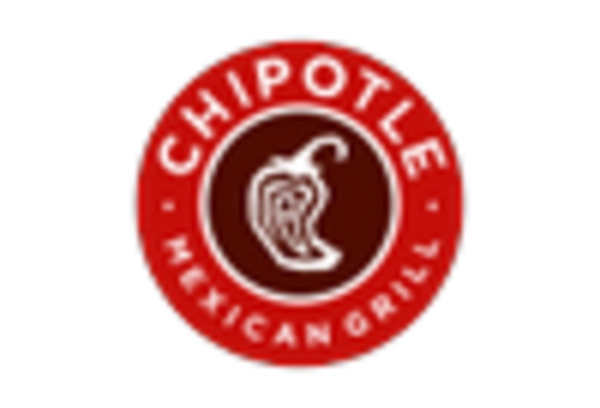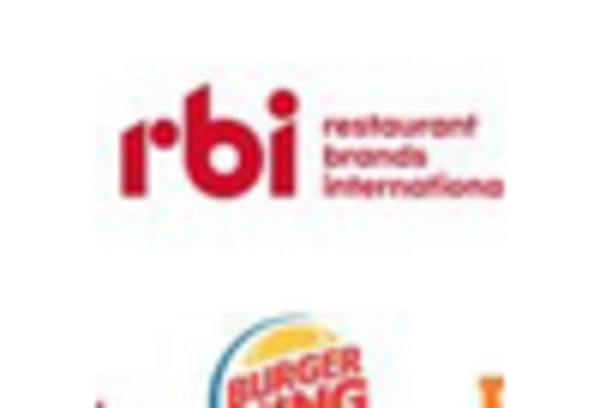Health and Wellness Trends
The Food Service Restaurant Market is increasingly influenced by health and wellness trends, as consumers prioritize nutritious dining options. There is a growing demand for menu items that cater to specific dietary preferences, such as plant-based, gluten-free, and low-calorie options. Recent surveys indicate that nearly 50 percent of consumers actively seek healthier choices when dining out, prompting restaurants to adapt their menus accordingly. This shift not only reflects changing consumer attitudes towards health but also presents an opportunity for restaurants to differentiate themselves in a crowded market. By offering health-conscious options, establishments can attract a broader customer base and enhance their reputation within the Food Service Restaurant Market.
Evolving Consumer Preferences
The Food Service Restaurant Market is currently experiencing a shift in consumer preferences, with an increasing demand for diverse and unique dining experiences. Consumers are gravitating towards restaurants that offer innovative menus, including ethnic cuisines and fusion dishes. This trend is reflected in the growing popularity of food trucks and pop-up restaurants, which cater to adventurous eaters seeking novel culinary experiences. According to recent data, nearly 60 percent of consumers express a desire to try new flavors and dishes, indicating a potential for restaurants to capitalize on this trend. As a result, establishments that adapt their offerings to meet these evolving preferences are likely to thrive in the competitive landscape of the Food Service Restaurant Market.
Focus on Sustainability Practices
Sustainability has emerged as a pivotal driver in the Food Service Restaurant Market, as consumers become more environmentally conscious. Restaurants are increasingly adopting sustainable practices, such as sourcing local ingredients, reducing food waste, and implementing eco-friendly packaging. Data suggests that nearly 70 percent of consumers are willing to pay more for sustainable dining options, highlighting the potential for restaurants to enhance their brand image and attract a loyal customer base. Furthermore, establishments that prioritize sustainability may benefit from government incentives and support, further solidifying their position in the market. As the demand for environmentally responsible dining options continues to grow, restaurants that embrace sustainability are likely to thrive in the Food Service Restaurant Market.
Rise of Delivery and Takeout Services
The Food Service Restaurant Market is witnessing a notable increase in the demand for delivery and takeout services. This trend is driven by the convenience that consumers seek in their dining experiences. Recent statistics indicate that approximately 30 percent of restaurant sales are now attributed to delivery and takeout, a figure that continues to rise. Restaurants are increasingly partnering with third-party delivery platforms to expand their reach and cater to the growing number of consumers who prefer dining at home. This shift not only enhances customer satisfaction but also allows restaurants to tap into new revenue streams. Consequently, establishments that effectively integrate delivery and takeout options into their business models are likely to gain a competitive edge in the Food Service Restaurant Market.
Technological Advancements in Operations
Technological advancements are reshaping the Food Service Restaurant Market, enhancing operational efficiency and customer engagement. The integration of technology, such as mobile ordering apps, contactless payment systems, and kitchen automation, is becoming increasingly prevalent. Recent data indicates that restaurants utilizing technology can improve service speed by up to 25 percent, significantly enhancing the customer experience. Additionally, data analytics tools enable restaurants to better understand consumer preferences and optimize their menus accordingly. As technology continues to evolve, establishments that leverage these advancements are likely to gain a competitive advantage in the Food Service Restaurant Market, positioning themselves for long-term success.

















Leave a Comment